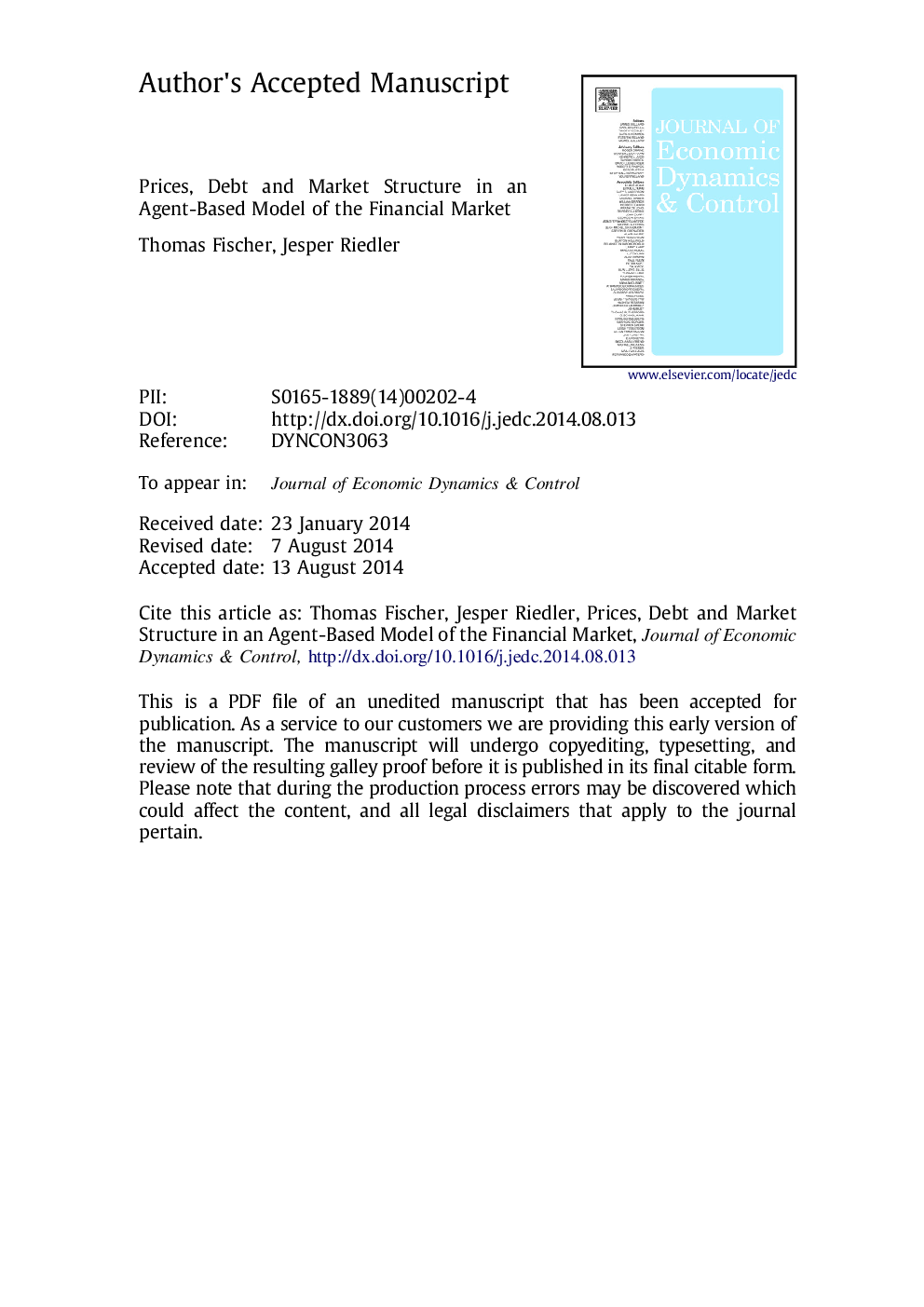| Article ID | Journal | Published Year | Pages | File Type |
|---|---|---|---|---|
| 5098525 | Journal of Economic Dynamics and Control | 2014 | 40 Pages |
Abstract
We develop an agent-based model in which heterogeneous and boundedly rational agents interact by trading a risky asset at an endogenously set price. Agents are endowed with balance sheets comprising the risky asset as well as cash on the asset side and equity capital as well as debt on the liabilities side. A number of findings emerge when simulating the model: we find that the empirically observable log-normal distribution of bank balance sheet size naturally emerges and that higher levels of leverage lead to a greater inequality among agents. Furthermore, greater leverage increases the frequency of bankruptcies and systemic events. Credit frictions, which we define as the stickiness of debt adjustments, are able to explain a key difference in the relation between leverage and assets observed for different bank types. Lowering credit frictions leads to an increasingly procyclical behavior of leverage, which is typical for investment banks. Nevertheless, the impact of credit frictions on the fragility of the model financial system is complex. Lower frictions do increase the stability of the system most of the time, while systemic events become more probable. In particular, we observe an increasing frequency of severe liquidity crises that can lead to the collapse of the entire model financial system.
Related Topics
Physical Sciences and Engineering
Mathematics
Control and Optimization
Authors
Thomas Fischer, Jesper Riedler,
